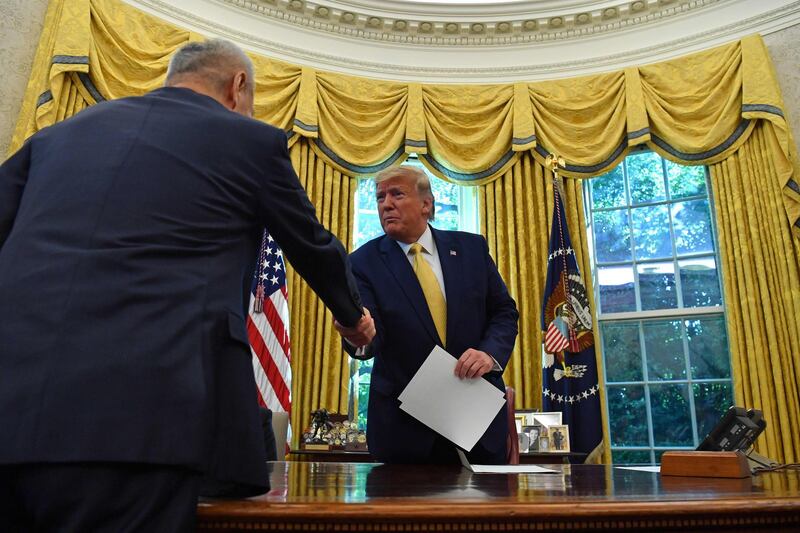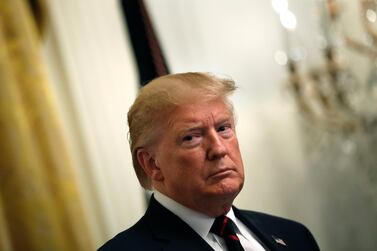The new week is starting with optimism on two key fronts, the US-China trade war and Brexit. As both issues have been the main sources of market uncertainty in 2019, signs of progress have the potential to transform sentiment in the final quarter. There are still significant hurdles to be overcome on both counts, however, before enduring resolutions are found.
A partial trade deal between the US and China — apparently agreed on Friday — will see China increase its purchases of US agricultural commodities and adhere to certain intellectual-property measures and concessions related to the Chinese yuan and financial services. In return the US will postpone tariff increases on $250 billion (Dh918.3bn) of Chinese imports due to come into effect this week, with President Donald Trump describing it as the first phase of a broader agreement that could be signed off next month.
While the Chinese delegation was much less effusive about the outcome, the signs of progress were positive enough to lift the Dow Jones Industrial Average, at one stage over 500 points on Friday. However, it will still take a few weeks to get the agreement committed to paper and though Mr Trump does not expect problems next month will remain a stressful one. There were also no comments made about the additional tariffs on a further $150bn of Chinese goods due to come into force in December. And solutions to the main issues of intellectual-property theft, forced technology transfers and complaints about Chinese industrial subsidies do not appear to have been found. Markets got what they were hoping for, with a truce and no new tariffs for now, but much still remains to be done on the substance of the dispute, which will determine whether this latest news is not just another triumph of hope over reality.
Also adding to the sudden improvement in market sentiment were reports that there could be a "Brexit deal", or a "pathway" to a deal that would resolve the Northern Irish backstop challenge. Formal negotiations are now under way between the UK and the European Union, causing sterling to rally 4 per cent over the past week. There has probably been too much negativity about the impossibility of resolving the border issue between Ireland and Northern Ireland, with much of this due to the historic distrust between the two sides and the exaggerated fear of destabilising the Good Friday Agreement. However, it is interesting to observe that as the October 31 deadline approaches, and with a UK Prime Minister intent on abiding by it for once, the EU has quickly been able to fast track negotiations in a way they have not before.
This should not be a complete surprise, of course, as with many of the eurozone economies close to recession, the last thing the EU needs is a "Brexit shock" that damages the EU's trade surplus with the UK. Boris Johnson could also be said to need a deal, as any delay to Brexit (an Article 50 extension or a climbdown by the UK government) would meet a negative UK voter reaction, according to opinion polls.
As with the US-China trade talks, there are numerous risks to a Brexit deal being completed, however, with the biggest one UK politics. The two sides will need to reach a deal by the EU Summit on October 17-18, after which a deal could be voted on in the UK parliament in time for the October 31 deadline. The first part is not impossible given the urgency now being applied, but passing a deal in parliament will be much more tricky. The withdrawal agreement has been rejected on three occasions in the past under former prime minister Theresa May, and the arithmetic around passing one this time is worse given Mr Johnson's loss of a majority in the House of Commons.
Furthermore. the details of the negotiations are not really known, so all parties will have to get comfortable with any deal very quickly if it is going to succeed. So far sterling’s rally has probably been all about short covering in case there is a deal, or at least a delay. If in fact the optimism does turn out to be justified, the pound would get a lot stronger.
Tim Fox is chief economist & head of research at Emirates NBD







